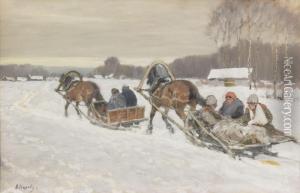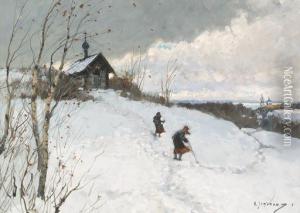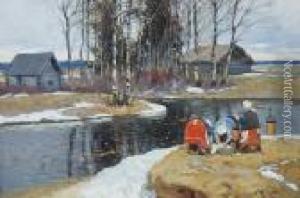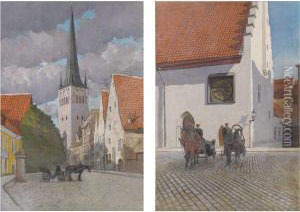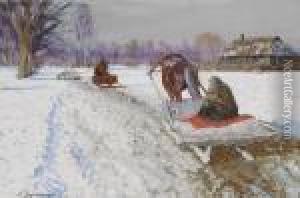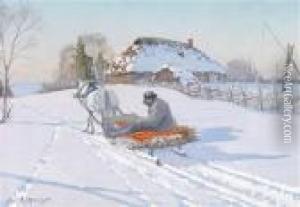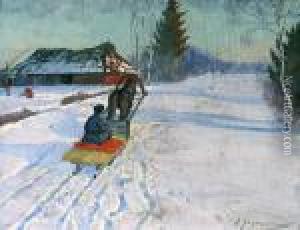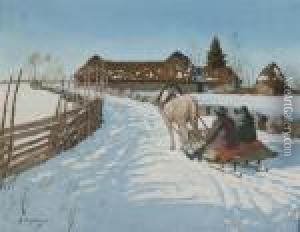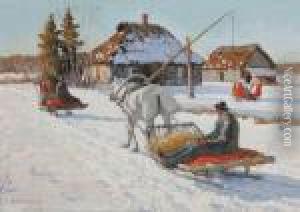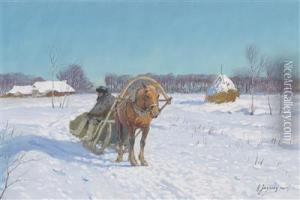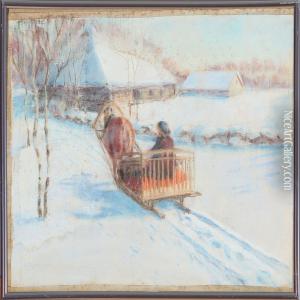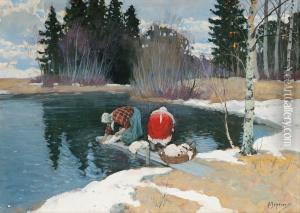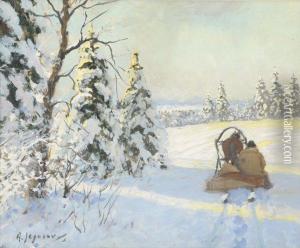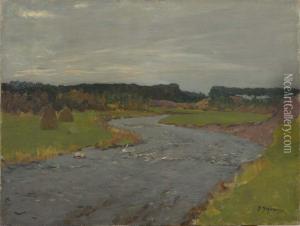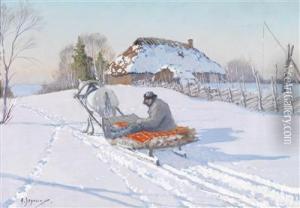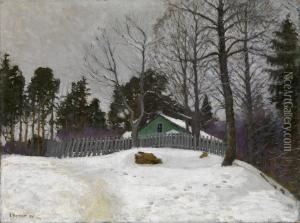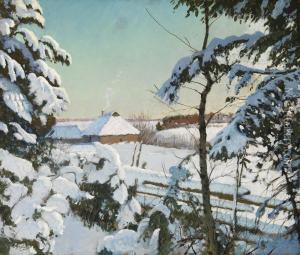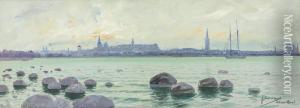Andrei Afanas'Evich Egorov Paintings
Andrei Afanas'evich Egorov was a Russian painter and graphic artist. Born on October 29, 1878, in the village of Novy Byt, Moscow Governorate, Russian Empire, he was primarily known for his dedication to depicting the Russian landscape and everyday life with a particular focus on the peasantry.
Egorov studied at the Moscow School of Painting, Sculpture and Architecture from 1898 to 1905 under the tutelage of notable artists such as Abram Arkhipov and Isaac Levitan. His early work was influenced by the Peredvizhniki (Wanderers), a group of Russian realist artists who formed an artists' cooperative in protest of academic restrictions. Their approach to art, emphasizing social awareness and the truthful portrayal of Russian life, resonated with Egorov's own interests.
After graduating, Egorov's work began to gain recognition. He participated in exhibitions with other Russian artists and became a member of the Union of Russian Artists as well as the Association of Artists of Revolutionary Russia (AKhRR). His work during this period reflected the changing social landscape of Russia, especially after the Revolution of 1917. He depicted workers and peasants in a heroic manner, consistent with the ethos of Socialist Realism that would dominate Soviet art.
During his career, Egorov also worked in graphic art, contributing illustrations for books and periodicals. This work broadened his impact on the cultural landscape of early 20th-century Russia.
Despite the political upheavals of his time, Egorov remained dedicated to the realistic representation of Russian life. His landscapes and genre scenes captured the essence of Russian identity and the spirit of the nation's rural environments. His work is characterized by a strong sense of composition, attention to detail, and a palette that often reflected the mood of the subject.
Egorov lived through World War I, the Russian Revolution, and World War II, periods of great turmoil that deeply affected the Russian people. These events also influenced the themes and sentiments expressed in his art.
Andrei Afanas'evich Egorov passed away on May 26, 1954, in Moscow, Soviet Union. Today, his works can be found in various museums and private collections, contributing to the understanding of a pivotal period in Russian history and the development of Russian art.
